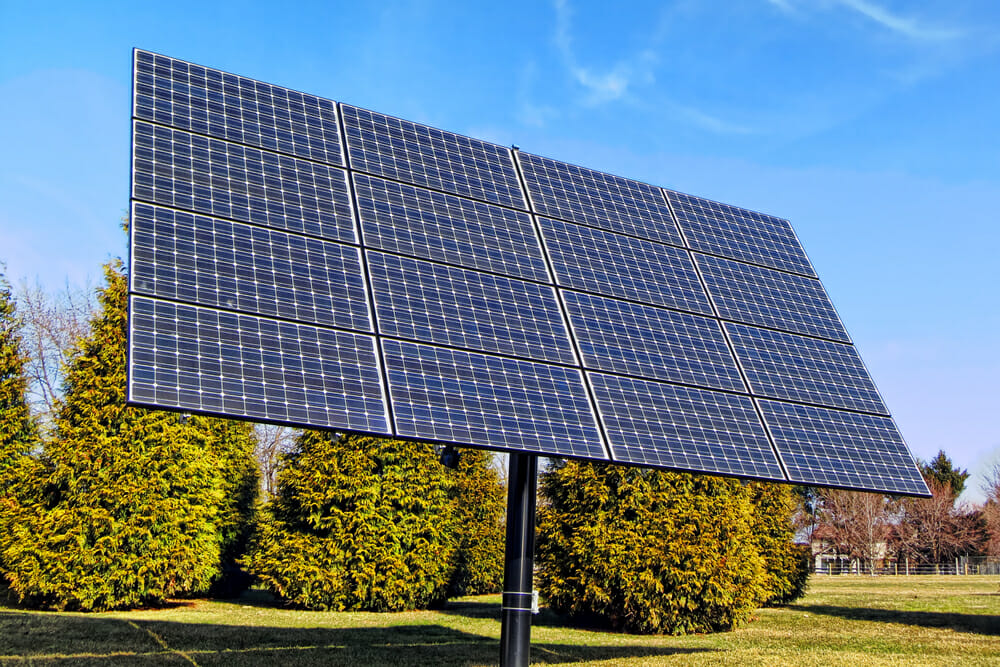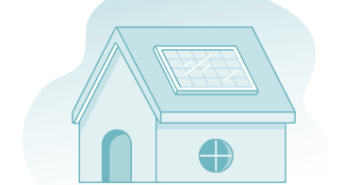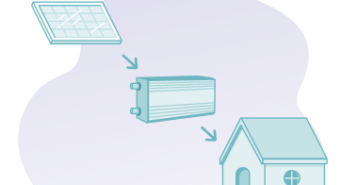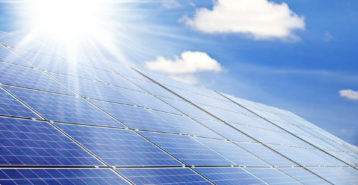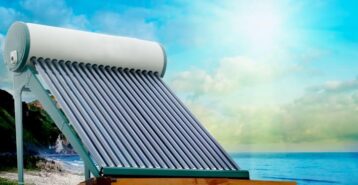Solar Panel Mounts
If you are considering solar for your home, you may have some specific questions about choosing a solar energy system or the installation process. For example, how much are solar panels to install? Do you need to use solar panel mounts? If so, what kind and what size?
Solar panel mounts are racks or frames designed to hold solar panels in place. They are typically lightweight and designed to be adjustable, so that the panels can be tilted to the proper position. The solar mounts can be positioned in most sections of your property, and they are built to provide a firm hold that withstands high levels of wind during operation. It’s always smart to speak with a solar installer near you to see what your options are for mounting solar panels.
Solar Panel Mounting Options
There are 3 different types of solar panels, and 3 different types of solar panel mounts available to homeowners looking to take advantage solar energy. The 3 types of mounts for solar panels include:
- Ground mounts
- Pole mounts
- Roof mounts (most common)
1. Ground Mounts
Solar panel ground mounts are durable frames that mount directly into the ground on your property. This mount is designed to hold a specific number of solar panels, which depends on the frame.
Many ground mounts are designed to hold the solar panels at a fixed angle all year round. This means that the panels will not run at full efficiency throughout the year. Some of the panels have a built-in angle-adjustment, allowing you to get the optimal angle for gathering sunlight throughout the year and improving your solar sun number score in accordance.
Benefits of Ground Mounts for Solar Panels
When plenty of land is available, and shade from trees is not an issue, ground mounts are an economical way to hold your solar panels in the right position. One major benefit of using a ground mount is that the panels are readily accessible for maintenance and cleaning. You also do not need to worry about stressing your roof system, or inadvertently letting water into the roofing during the mount installation.
Potential Drawbacks of Solar Panel Ground Mounts
Keep in mind that ground mounts are against local codes in some towns and cities around the country. It’s important to check with the local code enforcement agency to make sure the mounts are allowed in your area. It’s also important to make sure the soil conditions on your property are good enough to hold the mount in place effectively. Sandy or loose soil might need to be compressed before it can be used for a mount.
2. Pole Mounts
Solar panel pole mounts are durable racks or frames built to hold a set of solar cells that are mounted up on top of a single pole. One well-installed pole is capable of holding a surprisingly large number of solar panels—up to as many as sixteen panels.
Benefits of Pole Mounts for Solar Panels
There are some key benefits of using a pole mount instead of a roof or ground mount. First, pole mounts take up less ground space than ground mounts do. Imagine having the pole of a basketball hoop setup somewhere in the middle of your yard—it is much less obtrusive than a full frame spread out over a large section of land. The pole will likely put the panels six or more feet up in the air and let you maintain that ground space.
Another benefit of using a solar panel pole mount is that you’ll be saving your roof from unnecessary stress. Additionally, you will avoid the risky climb onto your roof, but you can still get your panels up high enough to avoid potential shade from trees.
Many times pole mounts are designed to allow the panels to swivel from side to side, as well as tilting up and down. This sun-tracking technology allows for more efficient solar panel performance and functionality overall.
3. Roof Mounts
One of the most common types of solar panel mounts today are solar panel roof mounts. These mounts are desirable for many homeowners because they keep the panels up and out of the way of the yard. The roof is also the most common spot for optimal sunlight.
Some roof mounts are designed to go underneath your roofing during the installation. These make it easier to remove your solar panels at a later date, or to replace the roofing on your home without disturbing the panels themselves.
Keep in mind that this type of mount system must be installed before the roofing of your home—much the same as a skylight installation. The mount goes down and the siding is installed up and around the mount with flashing to keep a watertight seal. Usually this style of mount is a flush-mounted system with the panels sitting right on top of the roof. However, there are some mount systems that go under the siding, while having supports that are installed underneath the roofing.
Benefits of Roof Mounts for Solar Panels
They are also surprisingly affordable, since they can easily be flat mounted to the roof. This is because most rooftops already provide the angle necessary to gather sunlight effectively.
Potential Drawbacks of Roof Mounts
While the mounts themselves are fairly affordable, they can be pricy to install. This is because the solar installer must climb up on the roof and attach them without disturbing the existing roofing. It’s a delicate and sometimes dangerous procedure that’s more time consuming than installing panels on pole or ground mounts. While roof mounts are out of the way of the yard, they typically end up costing more than other types of mounts after the installation is complete.
Solar Panel Mount Sizes
When choosing the size of solar panel mounts you want to use, it’s important to think of your current needs and potential future needs. A smaller mount system is undoubtedly more affordable than a large mount system. But that doesn’t mean getting the smaller system to accommodate your current panel figure is necessarily the best way to go.
If you believe there is a good chance you’ll want to expand the size of your solar array in the future, it makes sense to get a larger mount rather than a smaller one. Getting a mount that’s built to hold eight panels is much more affordable than getting two mounts designed to hold four panels each. In this case, it pays quite well to plan ahead.
Permits for Solar Panel Mount Installations
During most solar panel mount installations, it’s vital to have a permit before putting the mount in place. If you plan on making your own mount, it will need a stamp of approval from a civil engineer to signify that it’s safe—which can cost as much as $500.
Solar Panel Mount Costs
Because it is one of the most time-consuming and labor-intensive parts of installing the system, solar panel mounts are one of the biggest costs during a solar power system installation. Before deciding on solar panel mounts for your home, it’s important to find out how much each will cost you, including the labor to have them installed. Use the cost of each setup, along with all the benefits that they provide, to help you choose the best solar panel mount for your home.
Solar Tracking & Solar Mounting
Solar tracking systems are add-ons to solar panel mounts. They are designed to help turn the panels to face directly at the sun throughout the day.
With 90% of the sun’s energy in the direct beam of light that it produces, this direct beam can only be captured completely by a panel directly facing the sun. The farther the panel is tipped away from the sun, the less efficient it is. This results in even carefully installed static solar panels operating with nearly 50% to 75% efficiency losses at some point during the day. Solar trackers can help salvage those hours when the sun just isn’t shining directly on the panels like it needs to be.
Tracking for Roof Mounts vs. Pole and Ground Mounts
While there are roof solar mounts that will track the sunlight and swivel to keep the panels oriented properly, these solar panel mounts are quite expensive and difficult to install. In contrast, pole mounted or ground mounted units can be of the swiveling variety without being overly expensive or difficult to install.
If you plan on having a solar tracker included as part of your solar power system, it’s a good idea to consider ground or, better yet, pole mounts for your system. They can give you the tracking that you need to get more power out of your system throughout the day.
Solar mounts are not just used to keep solar panels in place during windy conditions. They are designed to maximize the efficiency of the panels by keeping them oriented in just the right way to catch that direct beam of sunlight full on. This means allowing the tilt of the panels to change throughout the year, and also allowing the angle of the panel to change throughout the day.
Some of the best solar panel mounts can greatly maximize a solar panel array’s efficiency. They can also increase power production so much more than simply adding a few panels will—so choose wisely!
Compare top-rated solar pros in your area.
Read real homeowner reviews, explore qualifications, and view promotions. Modernize makes it easy to browse professionals and find one that will be perfect for your project.

